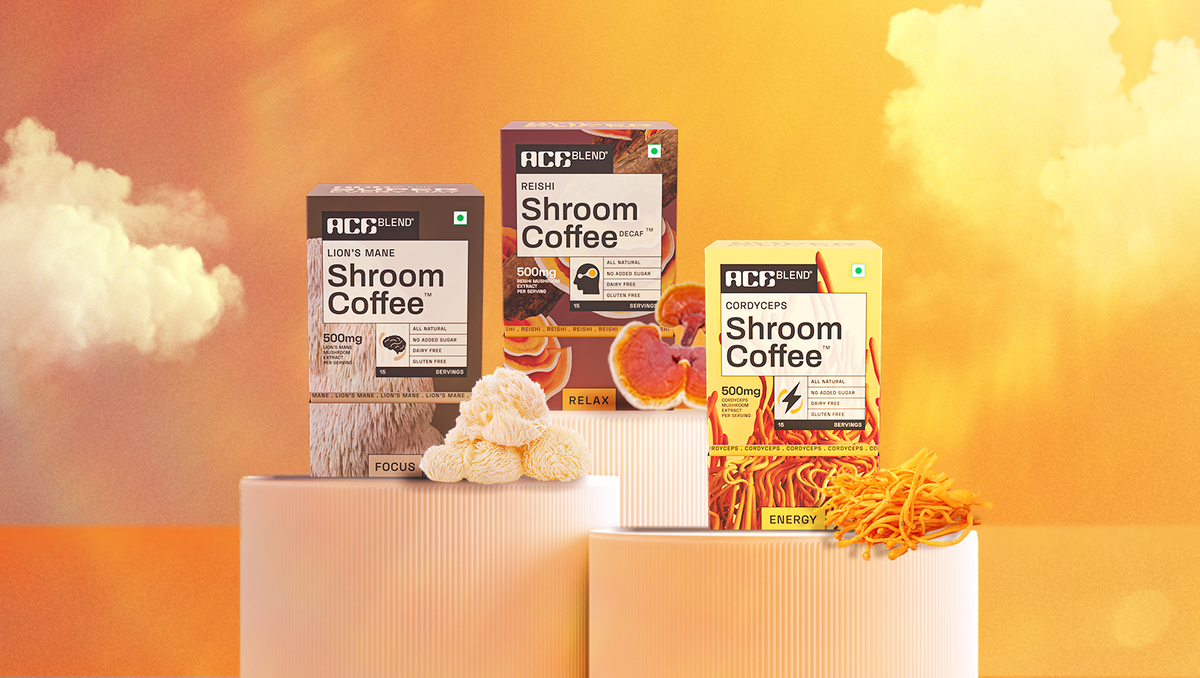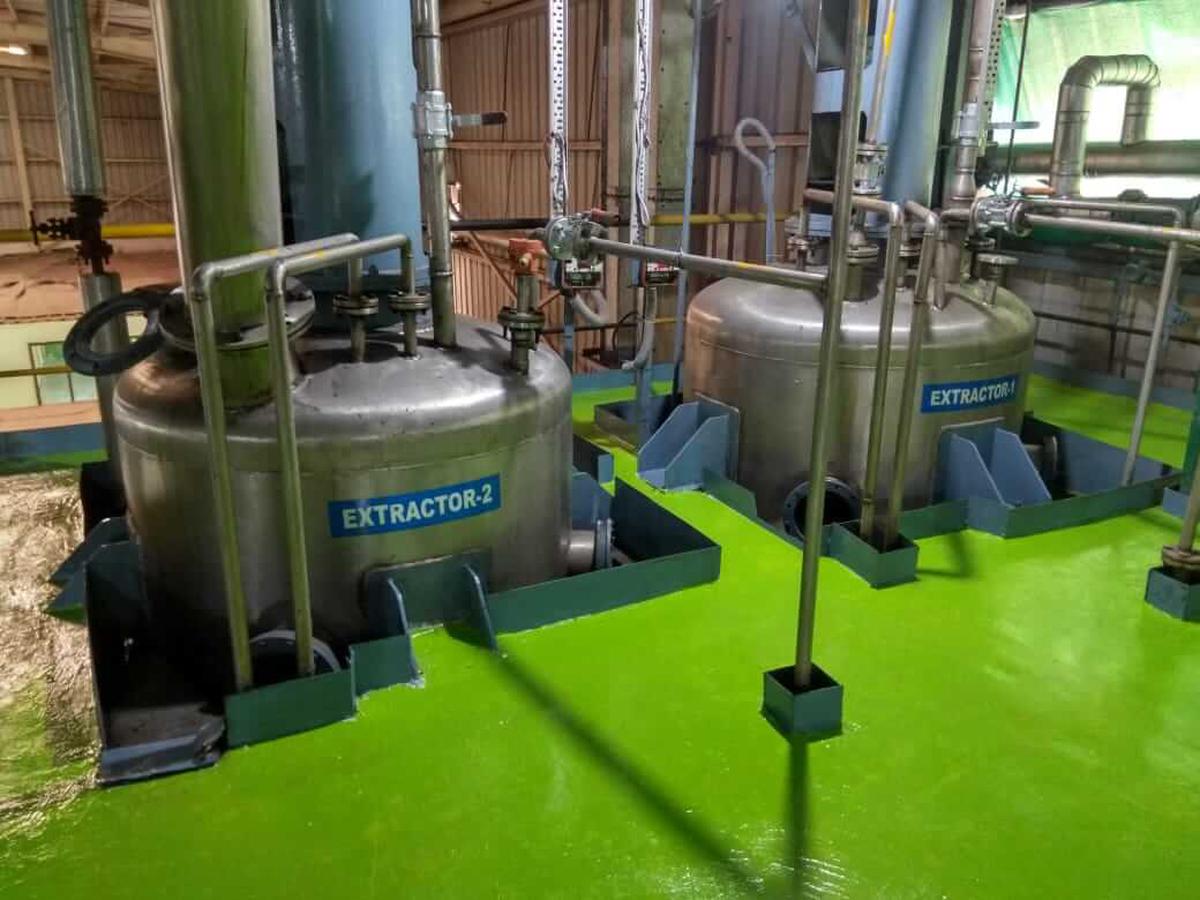Low on caffeine and high on protein, mushroom coffee is having its time in the sun and the rise in Indian homegrown brands in the segment is proof.

First, there were plant-based milks, then came avocados, and now there is mushroom coffee that appears to be the new kid on the block, driving a caffeinated generation to pick up a seemingly healthier alternative.
A quick Google search suggests there is curiosity rapidly building around the product. Especially in India where brands are taking a stab at it, and are now routinely answering questions on what indeed is mushroom coffee, or most importantly, how do these two ingredients even get along? “Imagine the same taste of coffee, but with about 25-30% of the coffee powder being made of mushrooms,” says Rakesh Bhatnagar, founder of Gurugram-based Rooted Active Naturals. Launched in 2020 with the aim to bring superfoods from across the globe to India, he says, “The idea was to introduce such superfoods in an easy-to-consume, potent, and tasty manner,” adding that this approach almost immediately led him to dig deeper into the medicinal qualities of mushrooms, which became the first launch category, and continues to be their top selling one.

Think your regular earthy coffee flavours, but with a dash of nuttiness and without the cons of getting acid reflux or caffeine-induced insomnia. “It became a game changer for a caffeine addict like me, who started facing some health concerns, but also felt irritable throughout the day every time I tried to quit,” says Vinay Kumar, 33, a software engineer based in Pune. Vinay has been a shroom coffee loyalist since the beginning of the COVID-19 pandemic in 2020, when longer work hours at home, coupled with little to no movement meant a sleep cycle being thrown into complete disarray. “And the caffeine was only exacerbating everything. That’s when I stumbled upon mushroom coffee online and thought I should give it a shot,” says Vinay. And he never looked back. Initially, he would mostly spot international brands online, but within a year, he found more homegrown names listed on e-commerce websites. A 100-gram pack of this joe in India is priced anywhere between ₹400 and ₹1,000, with average prices hovering around ₹600 for 100 gms.
From the 1940s
Interestingly, the origins of mushroom coffee go back to a dark time in history — the World War II era to be precise, when in the 1940s, coffee became one of the first few goods to suffer from chronic and acute shortages across Europe. Consequently, an alternative was introduced in Finland, where people started to increasingly brew and consume chaga mushroom coffee. This variety of fungi grows on the back of birch trees in cold terrains like Northern Europe, Korea, Siberia, Russia, Northern Canada, and Alaska. It has traditionally been used in these cultures and other parts of Asia as an immunity booster.

“Our mushrooms undergo purely water-based extraction. This method preserves the critical bioactive components and ensures batch-to-batch consistency. It also prevents the loss of essential mushroom properties during the extraction process,” says Shivam Hingorani, founder of Ace Blend, a Mumbai-based company born in 2019 that deals in plant-based food.
While Rooted Active Naturals uses a blend of instant Arabica coffee with a mix of lion’s mane and chaga mushroom powder in their formulation, Ace Blend adopts a slightly different route. “We blend the chosen superfoods in their effective doses with 100 percent medium roast Arabica extract,” Shivam says of his brand that garnered over 10,000 customers in the past month. “As more consumers discover the remarkable advantages of mushroom-infused products, including improved cognitive function and jitter-free energy, we expect the demand for our mushroom coffee to continue surging worldwide at a rapid pace,” he adds.
The mushroom factbox
Some commonly used mushroom extracts to prepare coffee are derived from the chaga, reishi, lion’s mane, and cordyceps variants.These variants are known as adaptogenic mushrooms, which are considered herbs that, when consumed regularly, are known to help the body deal with stress.A cup of mushroom coffee contains about half the amount of caffeine than in a regular cup of coffee.
How to brew it?
Formulated as a powder, shroom coffee is brewed the usual way, with a teaspoon of it mixed in a cup of warm water or milk with sugar, as per taste. If one wants to have it cold, just brew it the regular way and let it cool down, before serving with ice. When this writer had her first cup of a shroom coffee blend brewed in warm water without sugar, the flavours reminded her of a well-made cappuccino, but in almond milk, as it comes with that distinctly nutty punch bearing a more velvety texture.
For 25-year-old Rosanna P from Goa — a recent shroom coffee convert — the switch happened after she had a cup of the brew at a friend’s place and did not realise it. “I actually thought it was a superior brew,” the self-proclaimed coffee connoisseur says. “The texture is just silkier. And for someone who picks her beans with utmost care, this discovery really surprised me,” she says.

Rosanna recalls hearing about shroom-coffee back in 2016 from a friend who lives in the US, and it is a fact corroborated by Chirag Kenia, Founder, and CEO at Urban Platter, a “gourmet grocery brand” headquartered in Mumbai and established in 2015. Chirag’s platform has been selling mushroom coffee since 2018, and he remembers a buzz around it since as early as 2017. “The US as a market started adopting these products very voraciously around 2017-18, which is also when we introduced it in India,” he says.
Chirag, however, believes the product has only reached a niche consumer base thus far, so the only way to scale it further is to underline its nutritional values as a superfood. “Mushrooms are such wondrous, nutrient-rich ingredients that immediately elevate any dish they are a part of,” he says, before predicting that the next big mushroom innovation will be snacks made of it. Clearly, it’s a mushroom world, and we are only living in it.
source: http://www.thehindu.com / The Hindu / Home> Food> Features / by Arshia Dhar / October 27th, 2023

